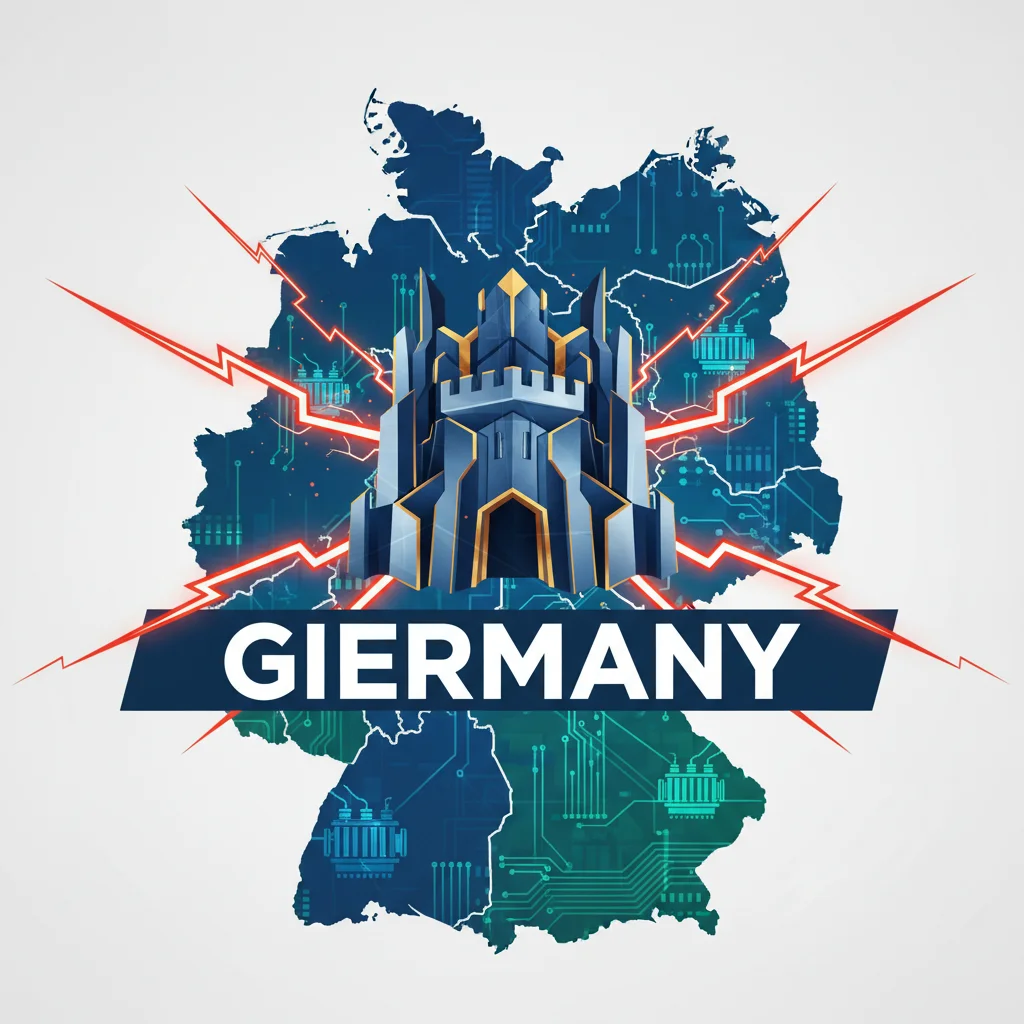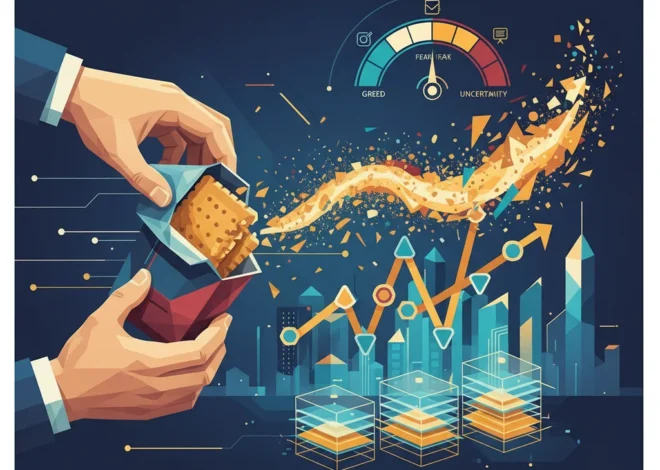
Citadel’s High-Voltage Gambit: Why a Hedge Fund Titan Is Plugging Into the German Power Grid
From Wall Street to the Power Grid: A New Frontier for High Finance
In the world of high-stakes finance, Citadel is a name synonymous with algorithmic precision and market dominance. Led by billionaire Ken Griffin, the firm has built an empire on its ability to execute millions of trades per second, capitalizing on fleeting opportunities in the global stock market. But its latest move is raising eyebrows, taking it far from the familiar ticker tapes of New York and into the complex, physical world of European energy infrastructure. Citadel Securities, the firm’s market-making arm, is officially plugging into Germany’s power market, a strategic play that signals a profound shift in both the energy and finance sectors.
The firm has become a direct trading participant on the EPEX Spot, Europe’s leading spot power exchange, and a direct clearing member of the European Energy Exchange (EEX) (source). For the uninitiated, this isn’t like simply buying energy stocks. This is akin to getting a seat at the control panel. By becoming a direct member, Citadel is bypassing intermediaries and placing itself at the very heart of Germany’s day-ahead and intraday electricity markets—the real-time auctions that determine the price of power across the continent’s largest economy.
This move is significant because these markets have traditionally been the domain of utility companies, specialized energy traders, and large industrial consumers. The entry of a high-frequency trading (HFT) behemoth like Citadel represents the accelerating convergence of sophisticated financial technology and critical physical commodities. It’s a bold declaration that the same algorithms that master stock price fluctuations can be deployed to trade megawatts, and it begs the question: why this market, and why now?
The Perfect Storm: Volatility, Technology, and Unprecedented Opportunity
Citadel’s decision wasn’t made in a vacuum. It’s a calculated response to a “perfect storm” of geopolitical and economic factors that have turned the once-staid European energy markets into one of the most volatile—and potentially lucrative—arenas in the world.
At the center of this storm is unprecedented volatility. Russia’s invasion of Ukraine and the subsequent weaponization of natural gas supplies sent shockwaves through the European economy, causing electricity prices to swing wildly. For consumers and businesses, this volatility is a source of immense financial pain and uncertainty. For a quantitative trading firm like Citadel, however, volatility is oxygen. Their entire business model is built on sophisticated systems designed to thrive on price discrepancies and rapid market movements. The more prices fluctuate, the more opportunities their algorithms have to generate profit from minuscule, millisecond-long arbitrage opportunities.
The German power market, being the largest and most liquid in Europe, is the prime venue for this strategy. The intraday market, in particular, is a perfect fit for HFT. This is where electricity is bought and sold for delivery within the same day, often in 15-minute blocks. Factors like a sudden drop in wind generation or an unexpected power plant outage can cause prices to spike or plummet in an instant. Citadel’s technological infrastructure gives it a decisive edge in this environment, allowing it to react to new information and execute trades faster than humanly possible. This is where cutting-edge fintech meets the fundamental laws of supply and demand.
Furthermore, the broader commodities sector has been on a tear. While stock markets have faced headwinds, the commodities trading divisions of major banking institutions have reported record profits, driven by the same volatility that Citadel is now targeting. According to the Financial Times, top banks were on track for their second-best year ever in commodities trading as of late 2022. Citadel is simply following the money, applying its well-honed HFT toolkit to a new and fertile asset class.
A New Breed of Trader: Comparing Market Players
To fully grasp the significance of Citadel’s entry, it’s helpful to compare their approach to that of traditional players in the energy market. A utility company trades power to balance its supply (from power plants) with its demand (from customers), prioritizing grid stability. Citadel, as an HFT firm, has no physical assets or customers; its sole objective is to profit from price movements. This fundamental difference in motive and method is reshaping the market landscape.
The table below highlights the key differences between these two types of market participants:
| Feature | Traditional Utility / Energy Trader | High-Frequency Trading (HFT) Firm |
|---|---|---|
| Primary Goal | Balance physical supply and demand; ensure grid stability; hedge long-term risk. | Generate profit from short-term price volatility and arbitrage. |
| Trading Strategy | Based on fundamental analysis (weather forecasts, demand projections, plant availability). | Quantitative and algorithmic; based on statistical patterns and speed of execution. |
| Core Asset | Physical power plants, transmission lines, customer base. | Proprietary algorithms, low-latency data feeds, high-speed computing infrastructure. |
| Risk Horizon | Long-term (days, months, years). | Extremely short-term (milliseconds, seconds, minutes). |
| Technology Focus | Grid management software, demand forecasting models. | Co-location servers, fiber-optic networks, machine learning models. |
The Ripple Effect: Liquidity, Risk, and the Future of Energy Trading
The arrival of a heavyweight like Citadel is guaranteed to create ripples across the European energy sector. The implications—both positive and negative—will be felt by competitors, regulators, and potentially even consumers.
The Upside: A Flood of Liquidity
Proponents argue that the primary benefit of HFT participation is a massive increase in market liquidity. With Citadel executing thousands of buy and sell orders every hour, it becomes easier for all participants to find a counterparty for their trades. This can lead to a more efficient market with tighter “bid-ask spreads” (the difference between the highest price a buyer will pay and the lowest price a seller will accept). In theory, this enhanced efficiency should lead to more accurate price discovery, ensuring that the market price of electricity reflects its true real-time value (source).
The Downside: A New Vector for Systemic Risk
However, critics voice serious concerns. The speed and complexity of algorithmic trading can introduce new and unpredictable forms of risk. The fear is that automated strategies, especially if deployed by multiple firms, could interact in unexpected ways, potentially amplifying price swings rather than dampening them. An algorithm designed to sell automatically when prices drop could trigger other algorithms to do the same, creating a cascading effect that results in a “flash crash.” While a flash crash in the stock market is financially painful, a similar event in a power market could have dire physical consequences, threatening the stability of the grid itself.
This development will inevitably force a response from competitors and regulators. Traditional energy companies and banking institutions involved in commodities will face pressure to heavily invest in their own financial technology to keep pace. Meanwhile, regulators will need to enhance their monitoring capabilities and consider new rules to manage the risks posed by HFT in a sector so critical to the public good.
The Big Picture: The Financialization of Everything
Citadel’s German power gambit is more than an isolated business decision; it’s a chapter in a much larger story about the “financialization” of the global economy. It demonstrates how advanced technology is breaking down the barriers between abstract financial markets and the tangible, physical world.
The same forces of data analytics, machine learning, and high-speed computing are reshaping every industry. While Citadel’s approach is rooted in HFT, other innovations are also transforming commodity trading. Decentralized platforms utilizing blockchain technology, for example, are being explored to create more transparent and peer-to-peer energy markets. These technological advancements are turning everything, from electricity to carbon credits, into a fluid, tradable asset class accessible to a new breed of sophisticated financial players.
This convergence of economics and technology presents both immense opportunities for efficiency and daunting challenges for oversight. As algorithms play an increasingly direct role in allocating critical resources, the need for robust, tech-savvy regulation becomes paramount.
Conclusion: A High-Stakes Game to Watch
Citadel’s entry into the German power market is a landmark event. It’s a testament to the firm’s ambition and a clear signal that the immense volatility in energy markets has created an irresistible pull for the world’s most advanced trading firms. By leveraging its technological prowess, Citadel is betting it can outmaneuver traditional players and extract significant profits from the complex European power grid.
This move will undoubtedly serve as a catalyst for change, forcing competitors to adapt and regulators to evolve. For investors, finance professionals, and business leaders, this is a critical development to monitor. The intersection of high finance and critical infrastructure is no longer a theoretical concept; it’s happening in real-time on Europe’s power exchanges. How this high-voltage gambit plays out will have lasting implications for the future of both energy and investing.


